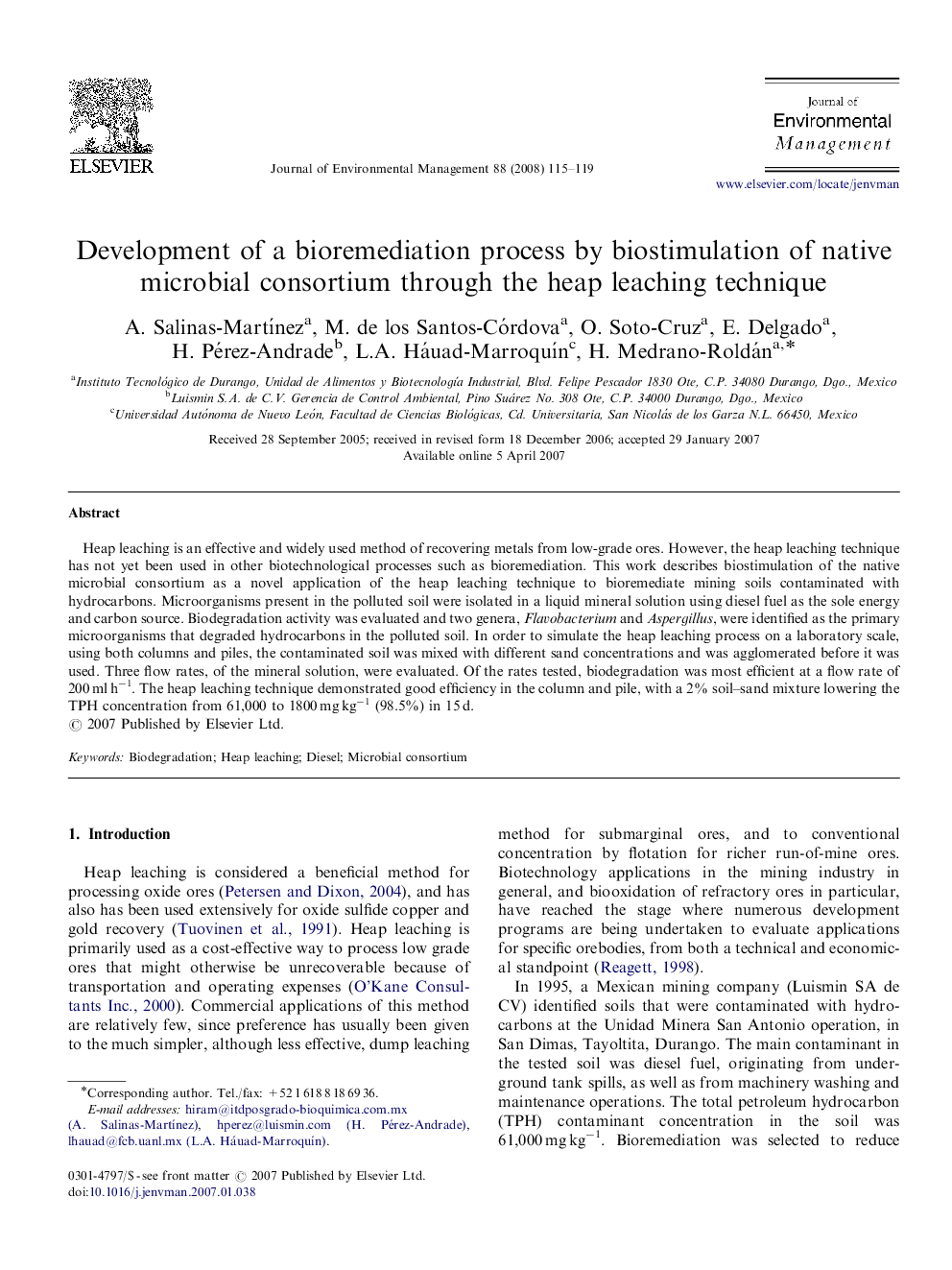| Article ID | Journal | Published Year | Pages | File Type |
|---|---|---|---|---|
| 1058561 | Journal of Environmental Management | 2008 | 5 Pages |
Heap leaching is an effective and widely used method of recovering metals from low-grade ores. However, the heap leaching technique has not yet been used in other biotechnological processes such as bioremediation. This work describes biostimulation of the native microbial consortium as a novel application of the heap leaching technique to bioremediate mining soils contaminated with hydrocarbons. Microorganisms present in the polluted soil were isolated in a liquid mineral solution using diesel fuel as the sole energy and carbon source. Biodegradation activity was evaluated and two genera, Flavobacterium and Aspergillus, were identified as the primary microorganisms that degraded hydrocarbons in the polluted soil. In order to simulate the heap leaching process on a laboratory scale, using both columns and piles, the contaminated soil was mixed with different sand concentrations and was agglomerated before it was used. Three flow rates, of the mineral solution, were evaluated. Of the rates tested, biodegradation was most efficient at a flow rate of 200 ml h−1. The heap leaching technique demonstrated good efficiency in the column and pile, with a 2% soil–sand mixture lowering the TPH concentration from 61,000 to 1800 mg kg−1 (98.5%) in 15 d.
